- Home
- international
- news
- Here are some of the most extravagant first class cabins and amenities throughout history, from the Titanic to the Celebrity Edge
Here are some of the most extravagant first class cabins and amenities throughout history, from the Titanic to the Celebrity Edge
James Pasley

- Luxury vessels were designed to be so impressive the passengers would forget they were crossing an ocean.
- Cruise ships in the past had Turkish baths, cafés, dog kennels, heated swimming pools, and tea gardens.
Ocean liners might not be the quickest way to get from one place to another, but they've often been the most luxurious.
This is no accident. These luxury vessels were designed to be so impressive the passengers would forget they were crossing an ocean.
They were a way for the wealthy to live like royalty.
Here are some of the most luxurious ocean liners and their cabins in recent history.
In 1901, the Prinzessin Victoria Luise was launched from Hamburg. This was the first ocean liner built specifically for luxury cruises, though it looked more like a yacht than a classic ocean liner.
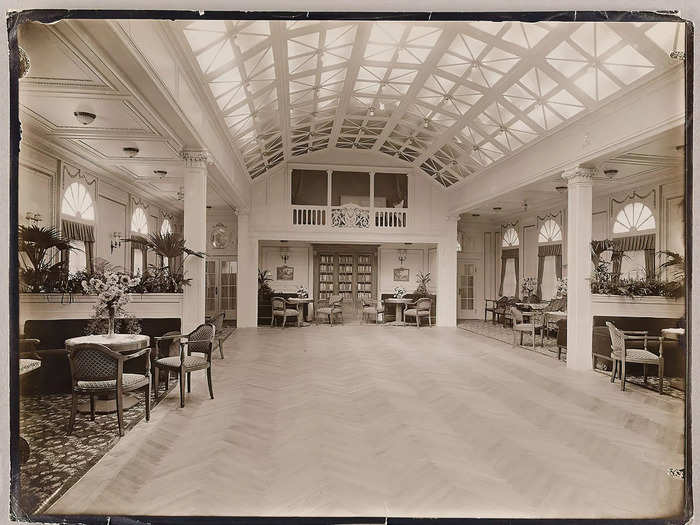
The ocean liner had 120 first-class cabins, each with access to running water, although only the Emperor's suite had its own private toilet.
On board, travelers could use a gym, browse the library or even develop photos in a dark room. At dinner, guests got to enjoy a string quartet playing from the balcony.
It was the beginning of a new form of travel.
Sources: Readers Digest, Stuff, Smithsonian Mag
In 1907, the Cunard Steamship Company launched the Mauretania and the Lusitania. These were two of the largest and fastest ocean liners in the world. They were the first of the "Grand Hotels" of the sea.
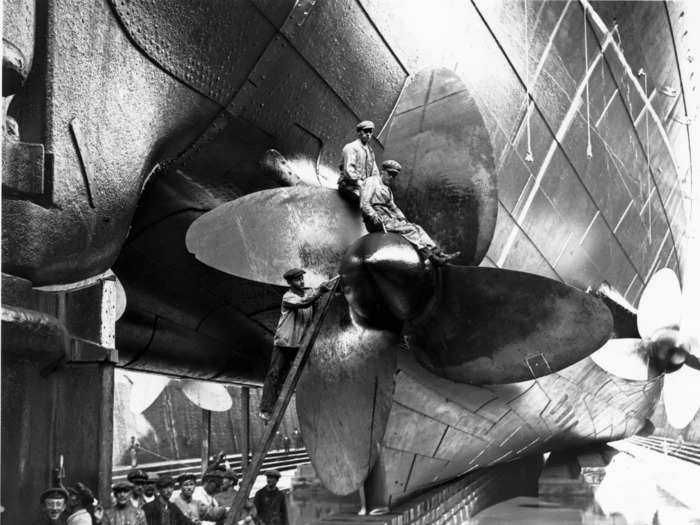
Note the size of the men compared to one of the Mauretania's propellers.
At capacity, the Mauretania held 560 first class passengers, 475 second class passengers and 1,300 third class passengers. Along with 812 crew members.
No expense was spared. The ship's finishing consisted of 28 different types of wood and covered with Edwardian tapestries.
First class cabins were designed to reflect the European renaissance. The ships were full of novelties including electric lifts, full orchestras, and palm courts. Newspapers were printed daily while at sea.
Sources: Chronicle Live, New York Public Library Blog
At the start of the 20th century, a number of famous ocean liners were launched, including the RMS Olympic in 1910, featuring an elegant main staircase, as well as the Aquitania in 1913.
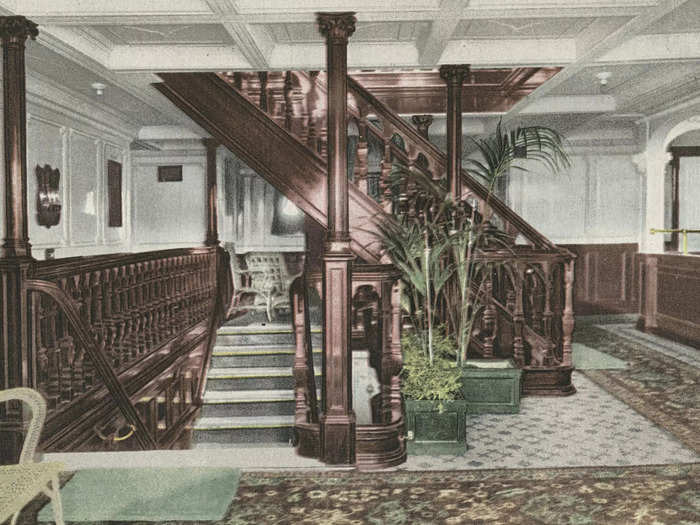
The Aquitania's swimming pool was also designed to evoke Egyptian architecture.
Sources: Royal Museum Greenwich, The Scotsman
Here is one of the rooms on the Olympic, known as the Chamber De Lux. The wallpaper appears to match the lining of the chairs.
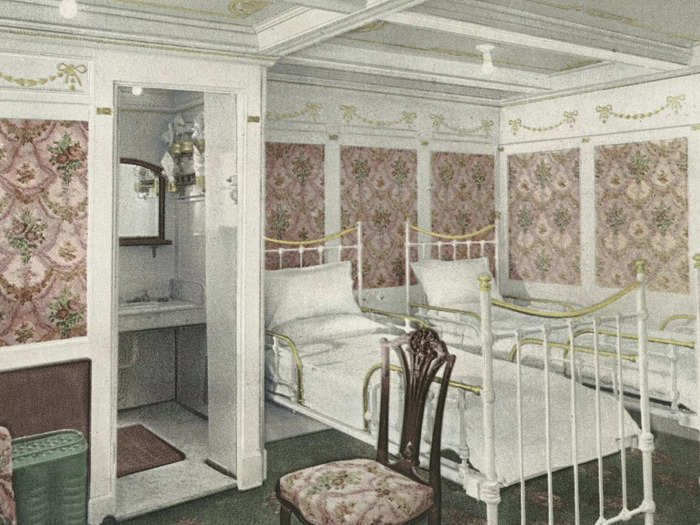
This one was called the stateroom. Mirror and drawers were provided, as well as a bunk bed to the right.
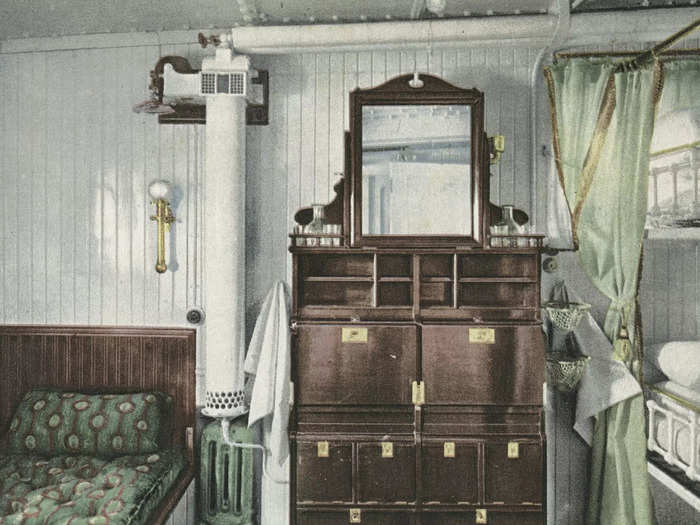
If guests were tired of their rooms, there were a number of places they could go. Men could drink at one of the bars on the Mauretania.
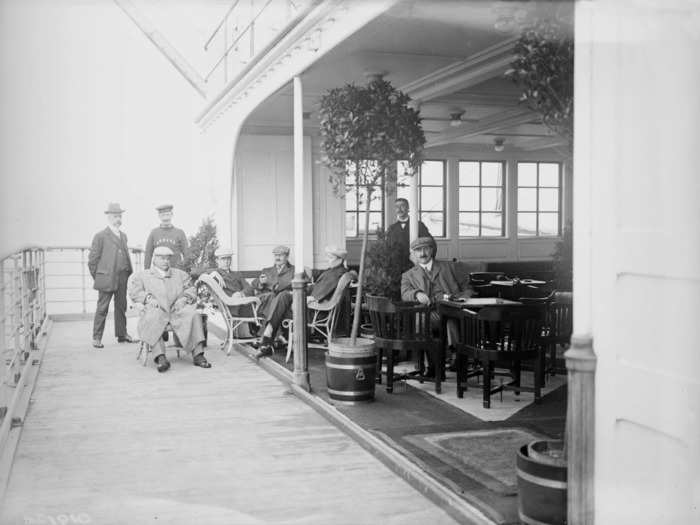
Guests could relax in salons, including this one known as the Louise XIV salon for first class members aboard the SS France.

Guests could play games out on deck. This was a high jump contest on the Franconia.
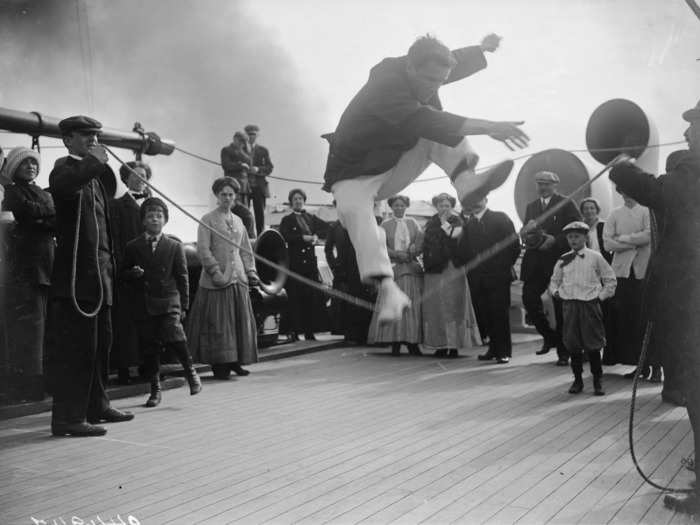
It wasn't just the men playing either. Women boxed aboard the Berengaria.
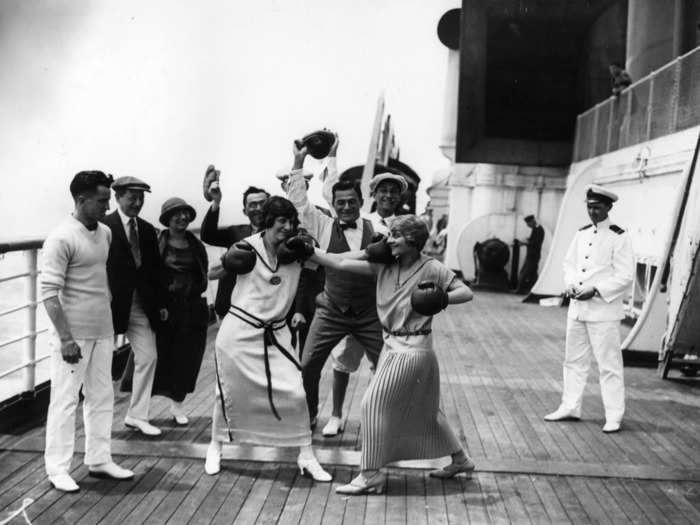
In 1912, the Titanic, arguably the most famous cruise ship, set sail.
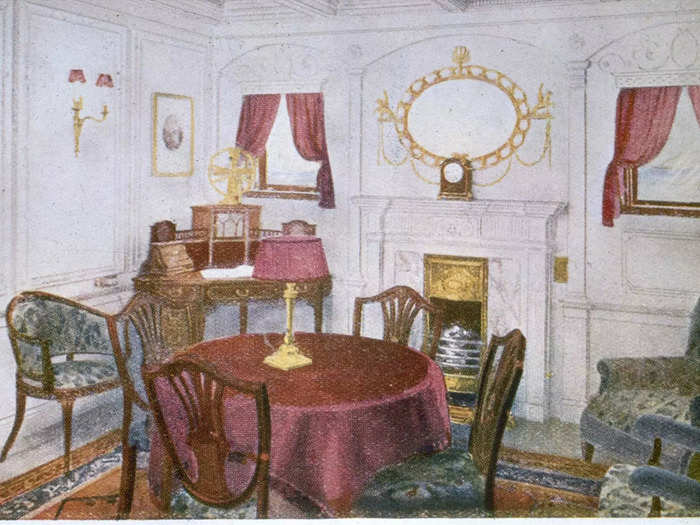
Ocean liners like the Titanic were attempting to draw a very specific American crowd. The desired customers were Americans who sought to live like, and later alongside, the European upper classes.
Due to the focus on sophistication, the Titanic's interior design was reasonably restrained — understated elegance was the goal.
All of the first class cabins had heating for the journey. The heaters were stored within fake fireplaces.
Handwoven carpets, wall paneling, columns and comfortable beds were also provided for those in first class.
Room service was offered but only a bare minimum. Guests were expected to dress up and dine with their peers.
Sources: Curbed, Irish Examiner, New York Times
First class passengers on the Titanic had it all — Turkish baths, a Parisian café, dog kennels, heated swimming pools, smoking rooms, and tea gardens. They could expect sparkling rooms on arrival, like this one being cleaned on the Mauretania.
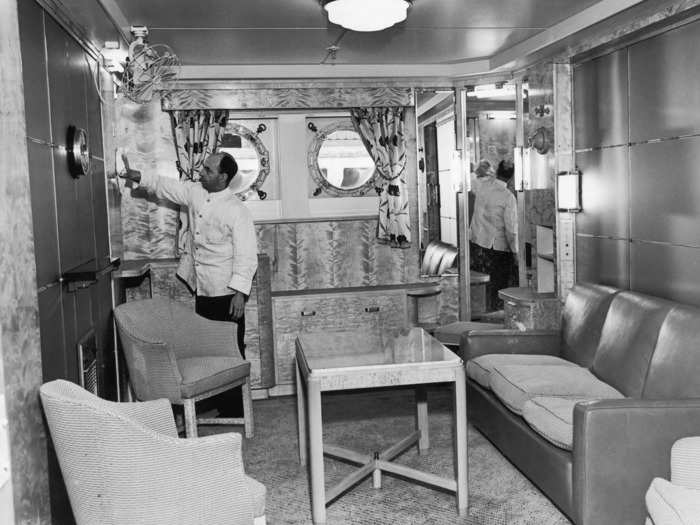
But ocean liners also offered second and third class cabins.
The Titanic was literally divided by class. Metal gates were used to separate the different levels of travelers.
Second class cabins — at least on the Titanic — were still comfortable. Guests stayed in rooms with oak paneling and mahogany furniture. But they did not have private bathrooms.
Third class was actually for the majority of passengers. They weren't terrible, but some basic activities like washing would have been difficult.
The Titanic only provided two bathtubs for 700 third class passengers.
Source: Emma Cruises
As the industry developed, details on the ships continued to evoke beautiful hotels. Here, an art deco door separates the smoking room and the grand saloon of a French liner called Normandie.
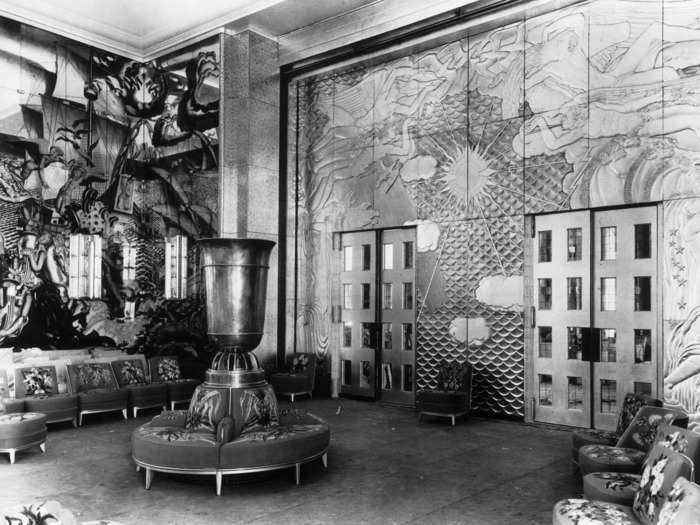
Source: Dwell
Recreational areas on the Mauretania featured amenities from cane chairs and hanging plants to fireplaces and bookshelves in the writing room.
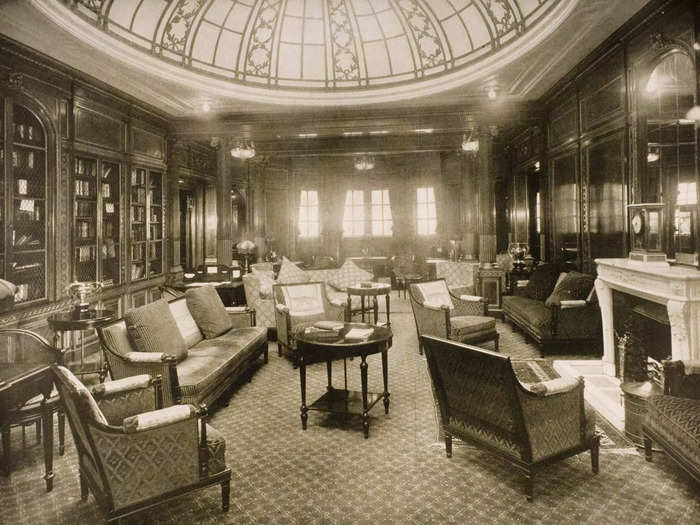
The luxury ocean liners industry slowed at the start of World War I and, although it picked up temporarily in the 1920s, the industry was weakened for decades due to the Great Depression and World War II.
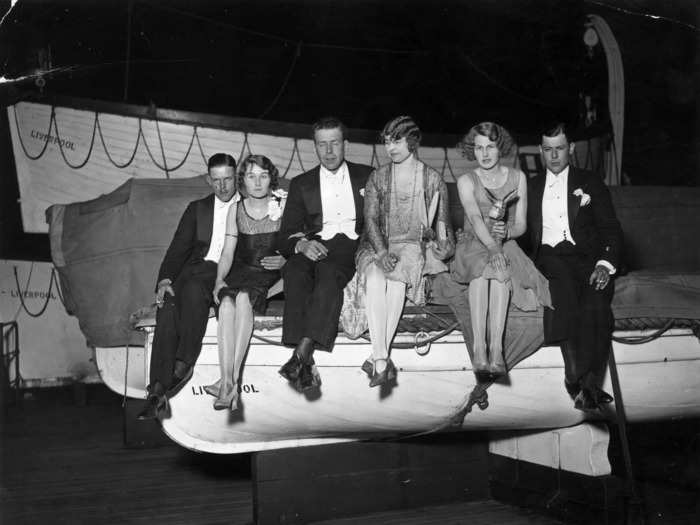
Sources: Smithsonian Mag, Britannica
Not that they disappeared completely. Here is a first-class lobby of a German ocean liner called the Caribia. Note the guests' formal dress code and the ship's modern art decor.
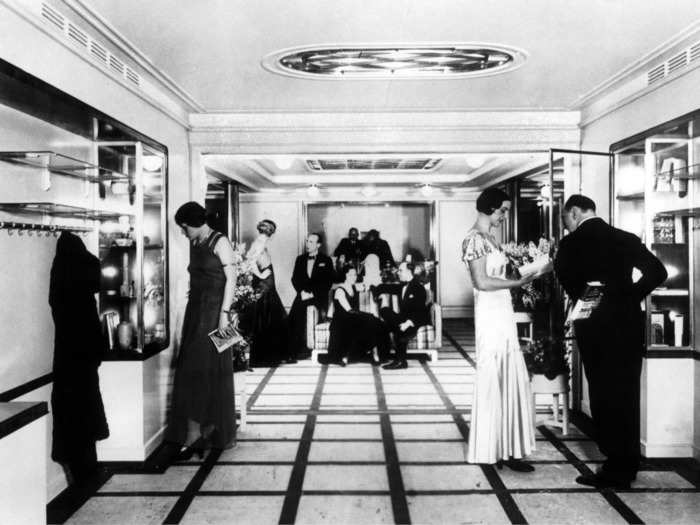
An attempt to revive the luxury ocean liners industry was made with the launch of Queen Mary in 1934. Bellhops brought fresh flowers to the guests.
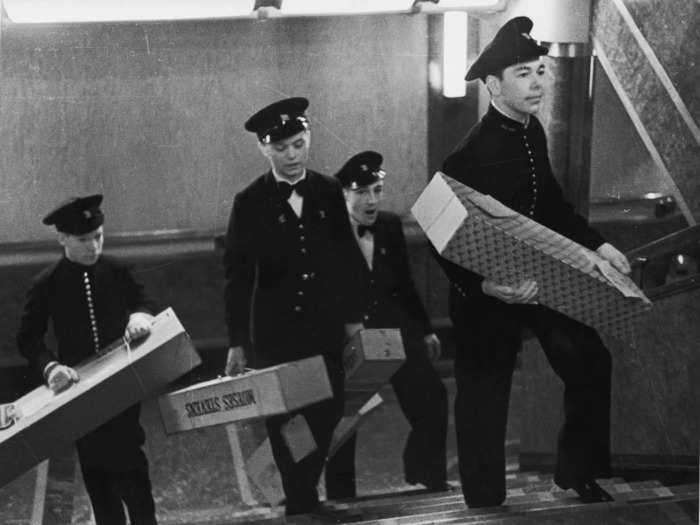
Source: New York Public Library Blog
The Queen Mary had a particularly luxurious restaurant. Above the guests dining in the restaurant was a map with a radiating light that pinpointed where the ocean liner was at all times.
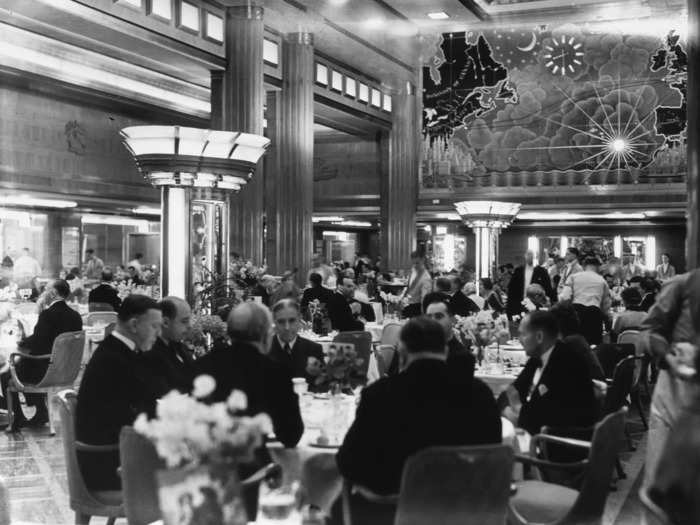
In 1969, the Queen Elizabeth II was launched. Unlike the ocean liners of the early 20th century, the QE2, as it was fondly known, was designed to look more modern and sleek — almost like it was something from space.
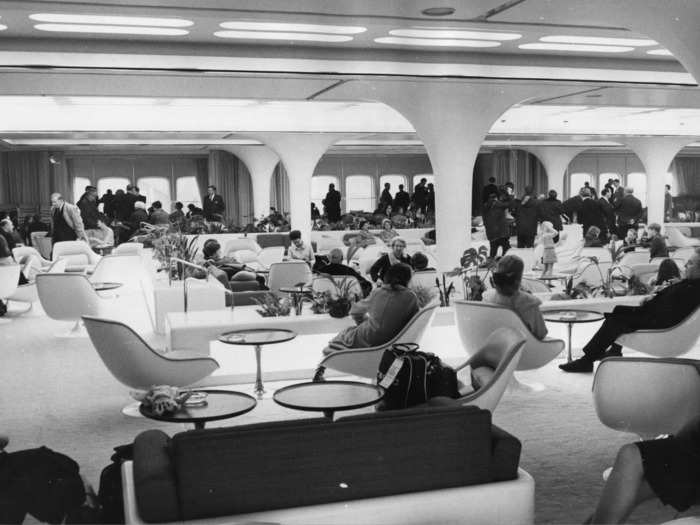
This was the Queen's Room. It was where guests could enjoy afternoon tea and cocktails.
One former guest told Condé Nast Traveler, "Afternoon Tea took place each day, promptly at 3 p.m., and it was an event not to be missed."
"Immaculate white gloved waiter service, and a vast selection of finger sandwiches, cakes, French fancies, and scones with jam and clotted cream," he added.
Source: CNTraveler
Guests could make calls from their bedrooms even while at sea.
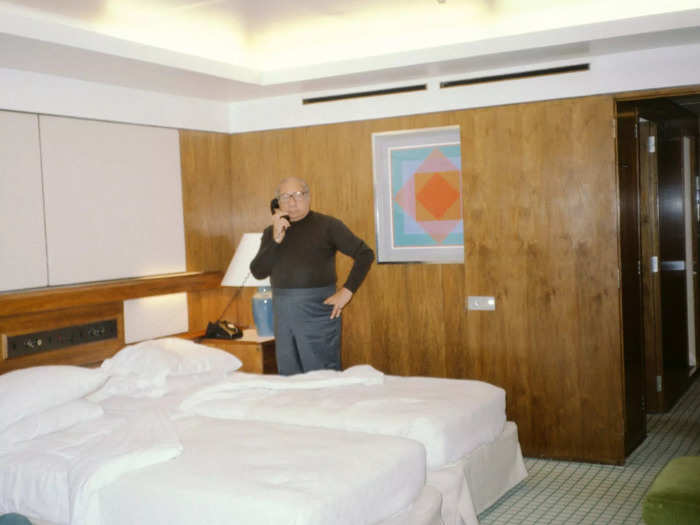
They could enjoy the comfortable upper deck library.
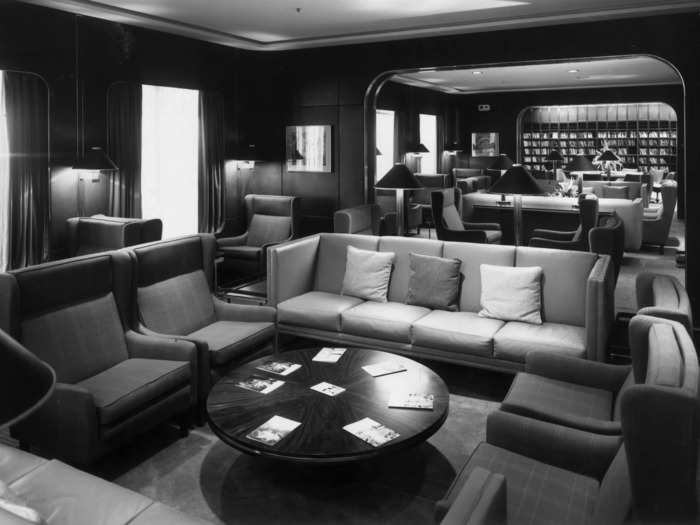
Or have fun swimming in the pool.
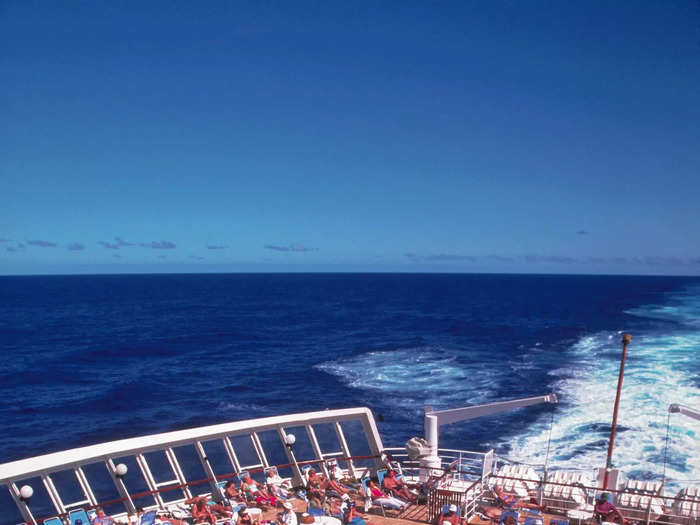
But though ocean liners were still taking people to popular destinations like Bermuda, it was another difficult period as commercial air travel began to dominate tourism in the late 1950s and 1960s.
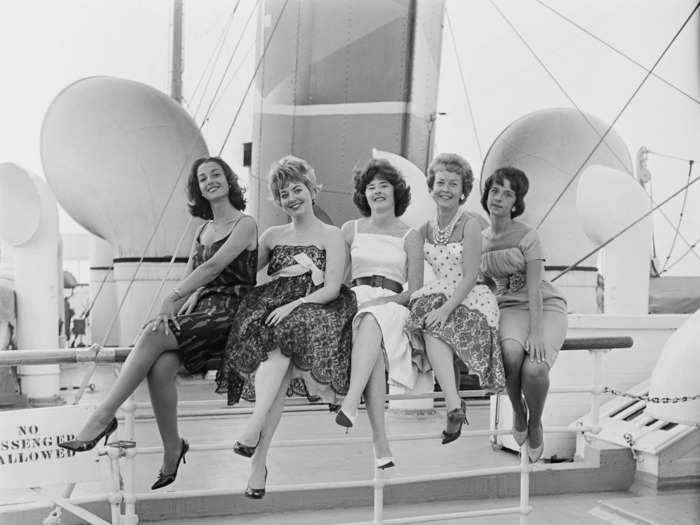
In particular, the introduction of the Boeing 707 Transatlantic route made drawing passengers to ocean liners difficult.
Source: New York Public Library Blog
The need for speed was gone — now, the focus was about being on the ship. Ocean liners were converted into cruise ships.
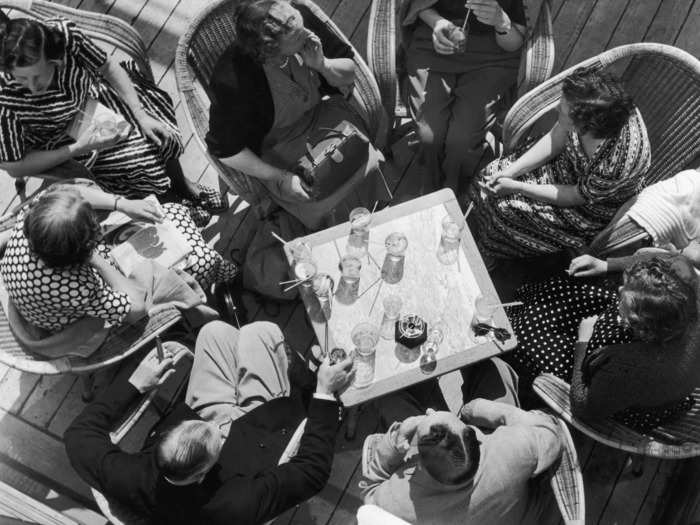
For instance, in 1979, the ocean liner the SS France was converted into a cruise ship with new pool decks, cabins, and public spaces.
Around the same time, QE2 instigated two things that changed cruises. The first was that it began to host shows for its guests. Cabaret performances were introduced.
The second was that it brought in "one-class" cruising. All amenities were available to all paying guests.
This meant that people started to view cruises as a vacation for normal people. The days of the elites were meant to be over.
Source: Cruise Industry News, Dwell, Condé Nast Traveler
In 1988, the Sovereign of the Seas, the first of the mega cruise ships, was launched. Eleven years later, the Voyager of the Seas was launched, which offered both rock climbing and ice skating.
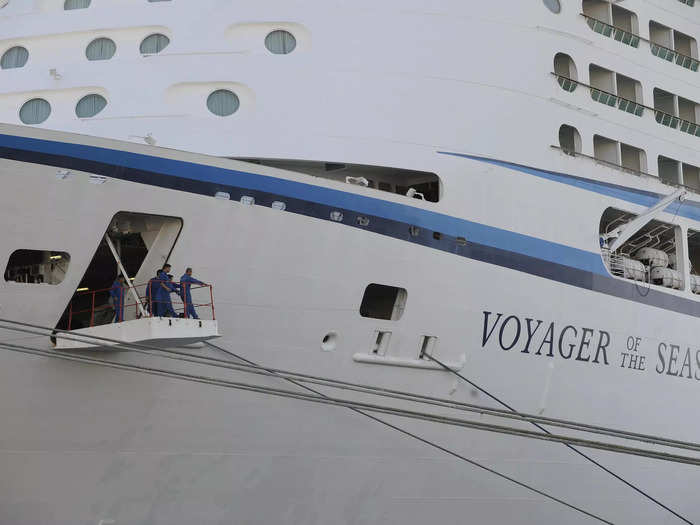
Source: New York Times
From the launch of the Sovereign of the Seas to now, modern cruise ships have provided more and more amenities, including extravagant performances, bumper cars, slides, zip lines, planetariums, casinos, and robotic bartenders. You name it, a cruise ship probably has it.

Source: Cruise Critic
Interestingly, the class divide on cruises appears to be making a comeback.

The Haven, a Norwegian cruise ship, provides an exclusive service for elite guests at a cost of up to $10,000 per week with the goal of keeping these guests away from everyone else.
Sources: American Magazine, Travel and Leisure
Regardless, guests can now experience luxury — from private villas with their own private plunge pool to leisure activities as quirky as silent discos — that the owners and designers of the first ocean liners could hardly have dreamed of.
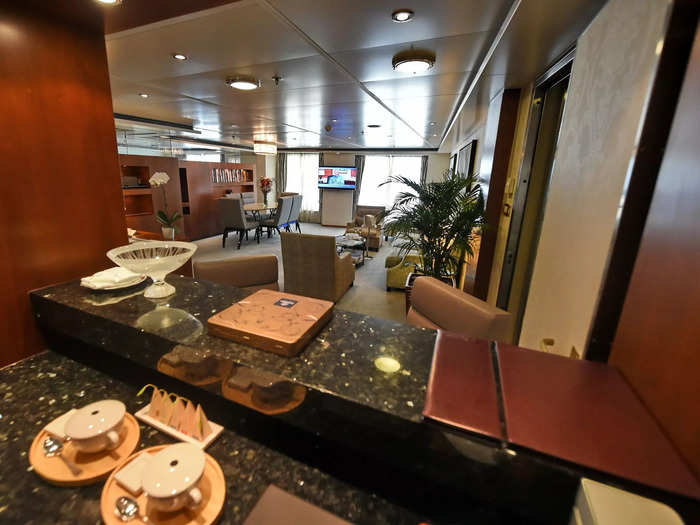
Source: Travel and Leisure
Popular Right Now
Popular Keywords
Advertisement